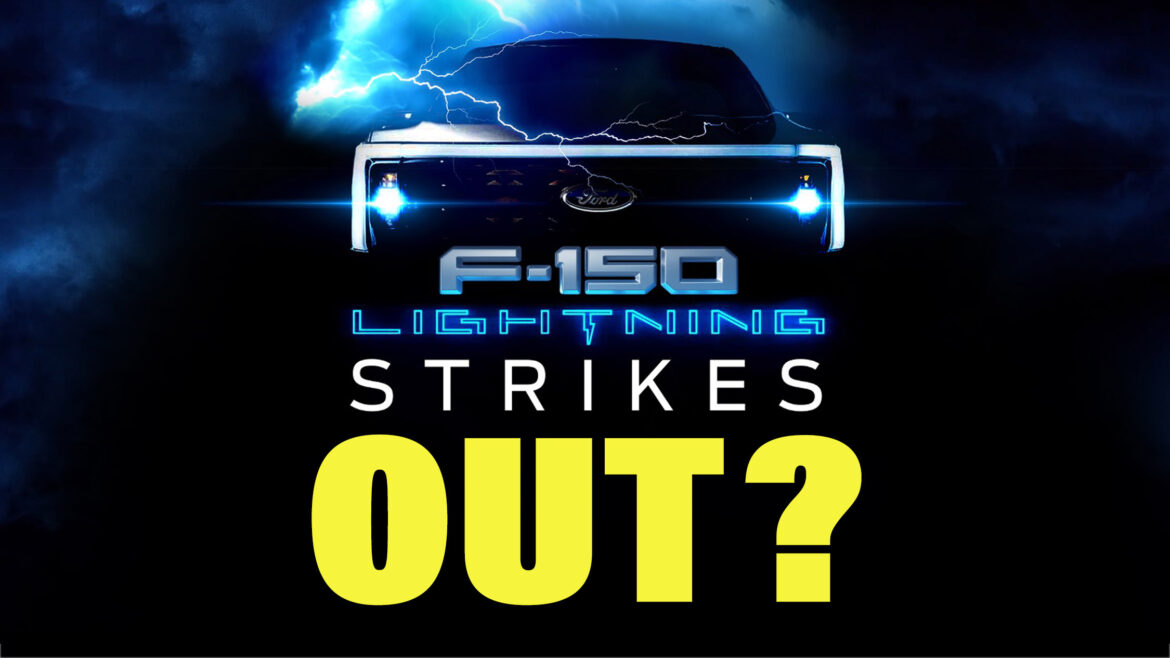Ford is working on two next-gen EV platforms that will drive down costs and make the Model e division profitable

- Ford’s finance head says that the “Lightning” name has no been confirmed for its next-generation electric pickup.
- The automaker is working on two new platforms, one for large EVs, like the next-gen pickup, and the other for smaller, more affordable vehicles.
- The smaller platform is being designed by a “skunkworks” team led by Tesla alumnus Alan Clarke and will help Ford’s electric business become profitable.
The F-150 Lightning was the best-selling electric pickup in America last year, but lightning may not strike twice, especially after the Blue Oval cut production by two-thirds. Ford’s chief financial officer, John Lawler, recently admitted that Ford’s next all-electric pickup may change its name.
“I don’t know that it’s going to be called Lightning. So now I’m getting out of my comfort zone there,” Lawler said at the Bank of America Securities 2024 Automotive Summit. “So no one says it’s the next Lightning. It’s the next pickup truck.”
The second-generation of Ford’s electric pickup will be based on one of two new platforms the automaker is working on. Both fall under the command of Doug Fields, a Tesla alumnus who is serving as Ford’s Chief EV, Digital, and Design Officer, but they are being designed separately. The second platform, intended for smaller passenger vehicles, is being designed in California.
More: Ford Slashes F-150 Lightning Production By Two Thirds Amidst Slow Demand
“The small platform is [being designed by] a group of individuals. We call it our skunkworks in California led by Alan Clarke, who came from Tesla,” said Lawler, “And it’s a group of individuals that he’s recruited into the company to develop this platform in a different way.”
The platform for smaller vehicles is being modeled after EV designs from Tesla and various Chinese brands, aiming for quicker market entry and cost reduction. While a separate team is designing the larger platform, Lawler emphasizes the potential cross-application of lessons learned between both projects.

“That’s why we started the group out in California, which is a group of highly successful EV engineers designing a new platform for us in a much different way,” said Lawler. “And it will allow us to have that low-cost affordable EV platform where we can create multiple top hats off of that.”
Both platforms will underpin multiple vehicles. That means that the larger architecture will be the basis for more than just the next-generation electric pickup. When asked to clarify, Lawler refused to share details about the vehicles that will be based on the smaller platform, but he did say that EV technology allows a vehicle the size of an Escape to have as much interior volume as an Explorer.
Lawler emphasized the significance of this approach, noting that the smaller exterior size of these vehicles will enable Ford to reduce battery expenses, ultimately lowering costs for both the company and the end consumer. He highlighted a crucial distinction in the EV industry compared to internal combustion, where larger ICE vehicles typically cost less to manufacture and yield higher profits. Conversely, with EVs, the larger the vehicle, the more expenditure on batteries, the most expensive component, which eats into profits.
As a result, Ford is excited about the smaller EV platform, which it believes will help Model e, its EV business, stop burning through cash. Whereas the division cost it billions in 2023, it will start making money once the next-generation EVs hit the road. Though reports suggest that the first EV based on the smaller platform will arrive in 2025, Lawler refused to confirm the timeline.



